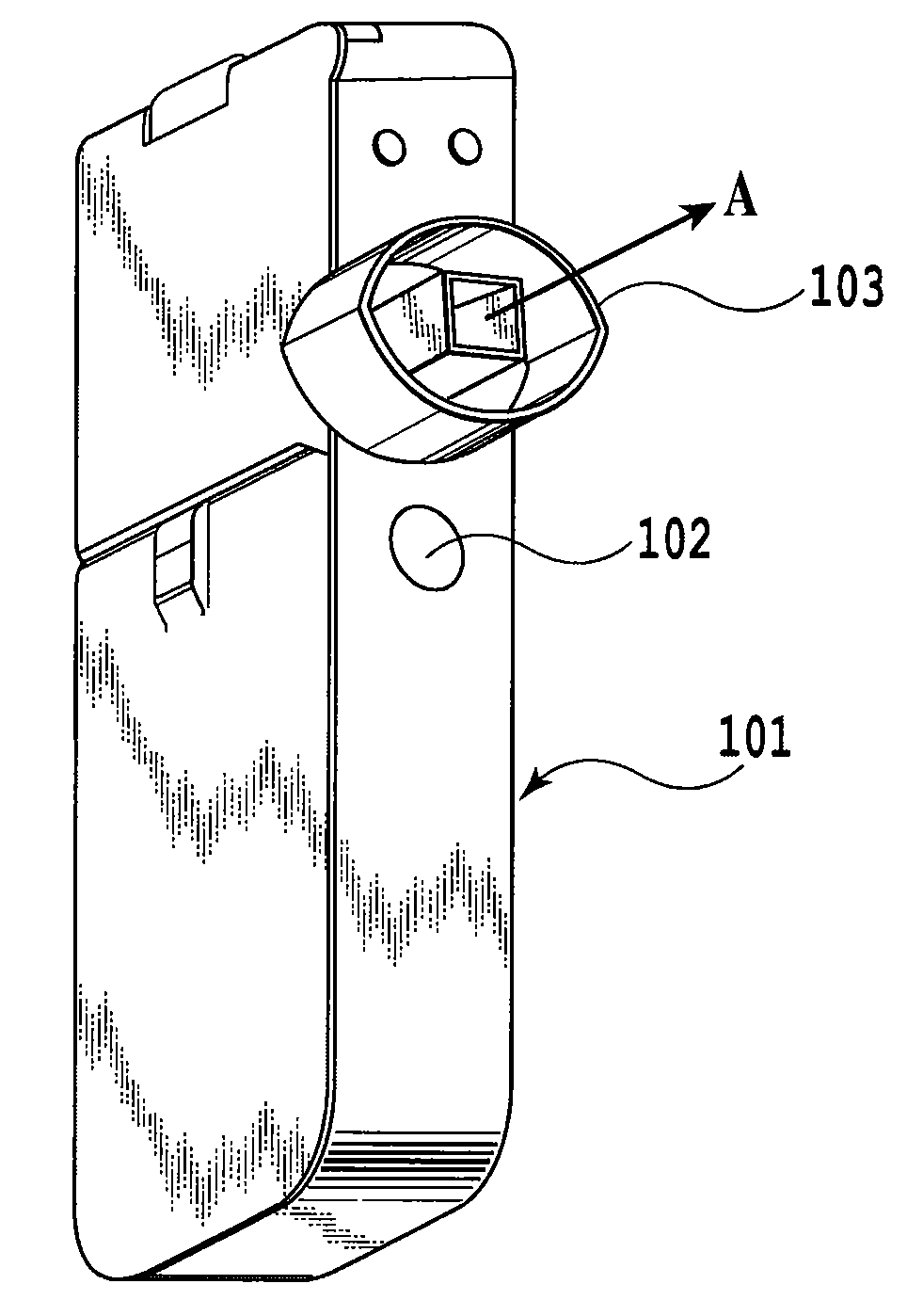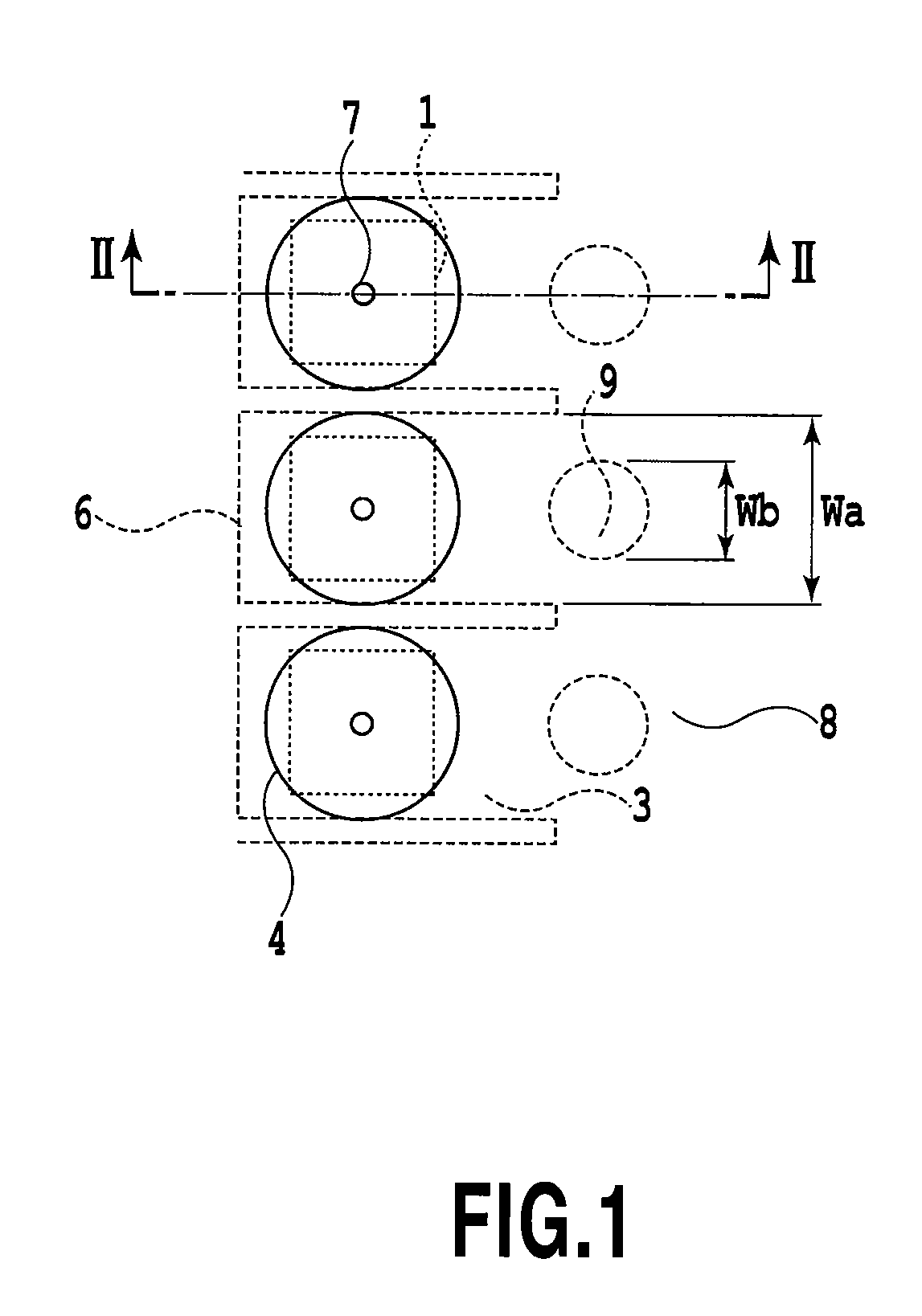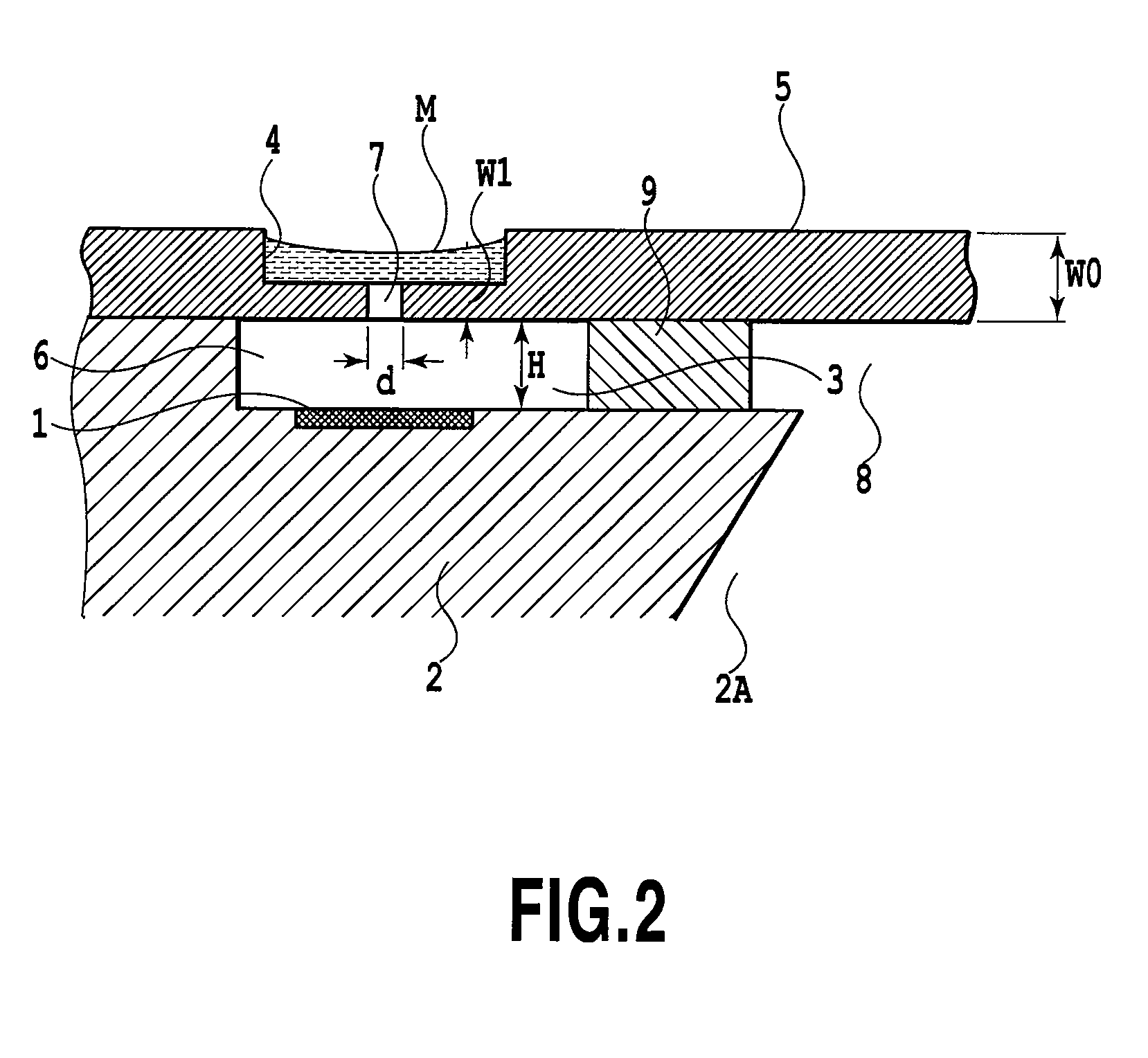Liquid ejection method and liquid ejection apparatus
a liquid ejection and liquid ejection technology, which is applied in the direction of medical atomizers, inhalators, respirators, etc., can solve the problems of wasteful discharge of ink, increased costs, and impede the proper ejection of liquid
- Summary
- Abstract
- Description
- Claims
- Application Information
AI Technical Summary
Benefits of technology
Problems solved by technology
Method used
Image
Examples
first embodiment
[0027]FIG. 4 is a perspective view of a liquid ejection apparatus to which the present invention is applicable. The liquid ejection apparatus in the present example is a medical suction apparatus used to allow a liquid drug (chemical) to be sucked into the lungs in the form of a liquid mist. A power switch 102 on an apparatus main body 101 is turned on to allow a driving circuit (not shown in the drawing) to drive a liquid ejection head. Then, the chemical stored in the apparatus main body 101 is ejected from the liquid ejection head in the direction of arrow A. The ejected and nebulized chemical is then sucked into the patient's mouth or the like through a mouthpiece 103.
[0028]FIG. 5 is a schematic perspective view illustrating an example of the basic configuration of the liquid ejection head. In the ejection head in the present example, electrothermal converters (heaters) 1 are used as energy generation portions that generate energy required to eject a liquid. That is, the heaters...
second embodiment
[0050]In a second embodiment, the voltage of a driving pulse applied to each heater 1 was set to be 1.5 times as high as that in the first embodiment. The other conditions are the same as those in the first embodiment.
[0051]As a result, a main droplet D1 of diameter 3 μm and succeeding six satellites D2 of diameter about 1 to 2 μm were generated. All of these seven droplets (D1 and D2) have sizes effective for treatment in the field of drug suction. Compared to Comparative Example 1, described below, the present embodiment increased the number of ejected droplets by 3.5-fold in spite of a slight increase in droplet diameter.
[0052]The process in which the satellite D2 was generated was observed. First, as is the case with the above-described embodiment, the liquid column projecting from the liquid surface of the chemical in an ejection port 4 was separated into the main droplet D1 and the liquid column C. Even with a slight variation from one chemical ejection operation to another, t...
third embodiment
[0056]In a third embodiment, a liquid ejection head was produced with the diameter of each pore 7 set to 5 μm. The voltage of a driving pulse applied to each heater 1 was set to 13.5 V. The other conditions are the same as those in the first embodiment.
[0057]As a result, a main droplet D1 of diameter 7 μm and succeeding four satellites D2 of diameter about 1 to 4 μm were generated. All of these five droplets (D1 and D2) have sizes effective for treatment in the field of drug suction. Compared to Comparative Example 1, described below, the present embodiment increased the number of ejected droplets by 2.5-fold in spite of a slight increase in droplet diameter.
[0058]The process in which the satellite D2 was generated was observed. First, as is the case with the above-described embodiments, a liquid column projecting from the liquid surface of the chemical in an ejection port 4 was separated into the main droplet D1 and the liquid column C. Even with a slight variation from one chemica...
PUM
 Login to View More
Login to View More Abstract
Description
Claims
Application Information
 Login to View More
Login to View More - R&D
- Intellectual Property
- Life Sciences
- Materials
- Tech Scout
- Unparalleled Data Quality
- Higher Quality Content
- 60% Fewer Hallucinations
Browse by: Latest US Patents, China's latest patents, Technical Efficacy Thesaurus, Application Domain, Technology Topic, Popular Technical Reports.
© 2025 PatSnap. All rights reserved.Legal|Privacy policy|Modern Slavery Act Transparency Statement|Sitemap|About US| Contact US: help@patsnap.com



